A Botanist is Never Bored!
Posted in Learning Experiences on March 14 2013, by Scott Mori
Scott A. Mori, Ph.D., Nathaniel Lord Britton Curator of Botany has been studying New World rain forests for The New York Botanical Garden for nearly 35 years. He has witnessed an unrelenting reduction in the extent of the forests he studies and, as a result, is dedicated to preserving the diversity of plants and animals found there.
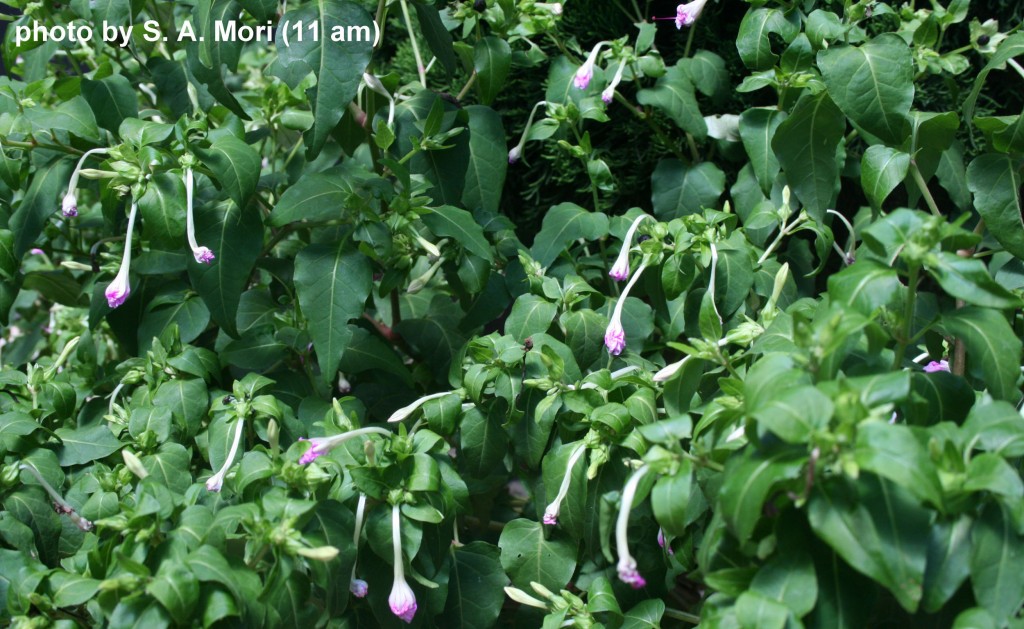
At the time of this writing, I am in São Paulo Brazil to attend a multinational meeting of scientists, each participating in a study of the plants and animals of the Amazon Basin. I arrived the day before the meeting, and had time to walk through the area around the hotel, exploring for weeds and cultivated plants. No matter where I travel, even in the largest cities, there are plants to enjoy. When I spot one I know, it is like running into an old friend and trying to remember his or her name.
First, I try to identify the family the plant belongs to, followed by the genus, and finally the species. After recalling its name, I study the plant to find out if there is something about it I have not seen before. The secret to discovering new information about a plant is to study it carefully through a hand lens–I prefer one that magnifies the flower, fruit, and seed parts by up to ten times their normal size. Finding a plant that I do not know provides an even more exciting encounter, but that will be left for another post.
Immediately after I left the hotel at 11 a.m., I spotted a four o’clock plant, scientifically known as Mirabilis jalapa (Nyctaginaceae family) and commonly cultivated in North America. At the time, the previous day’s flowers were wilted and drooping downward, but many others were in bud on the plant. Fast forward to 4 p.m. when passing the plant a second time, I noticed that the day’s flowers were open, the petals were fully expanded, and both the filaments and style formed beautiful coils placed within the calyx tube; two hours later, on my way to eat dinner, I passed the plant once more and discovered that the filaments and style were fully expanded. I also noted the stigma protruding a short distance beyond the anthers.
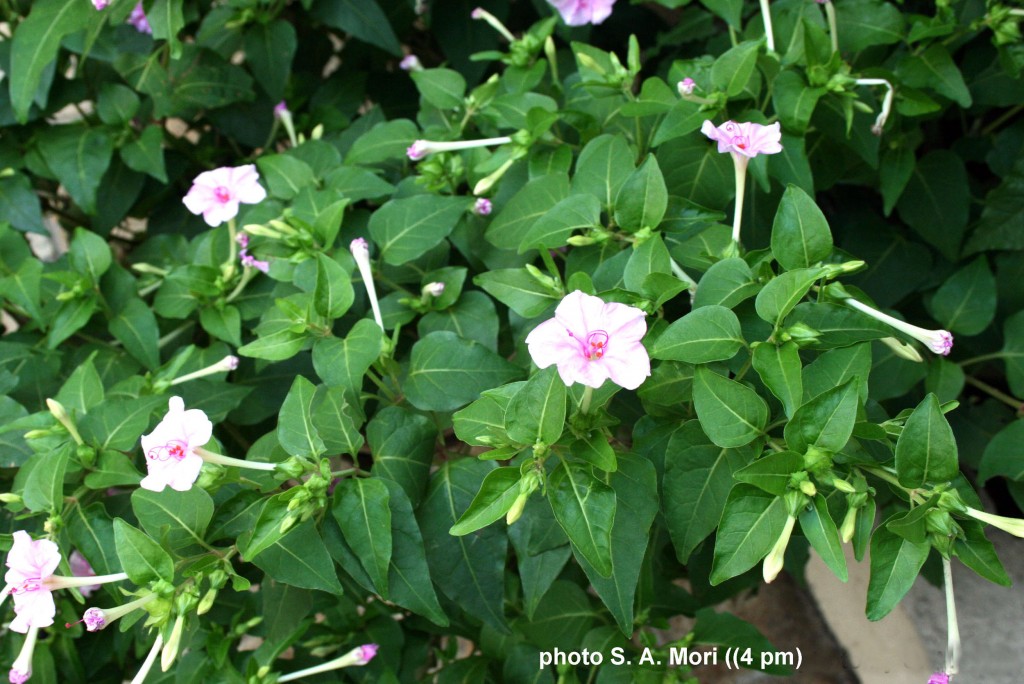
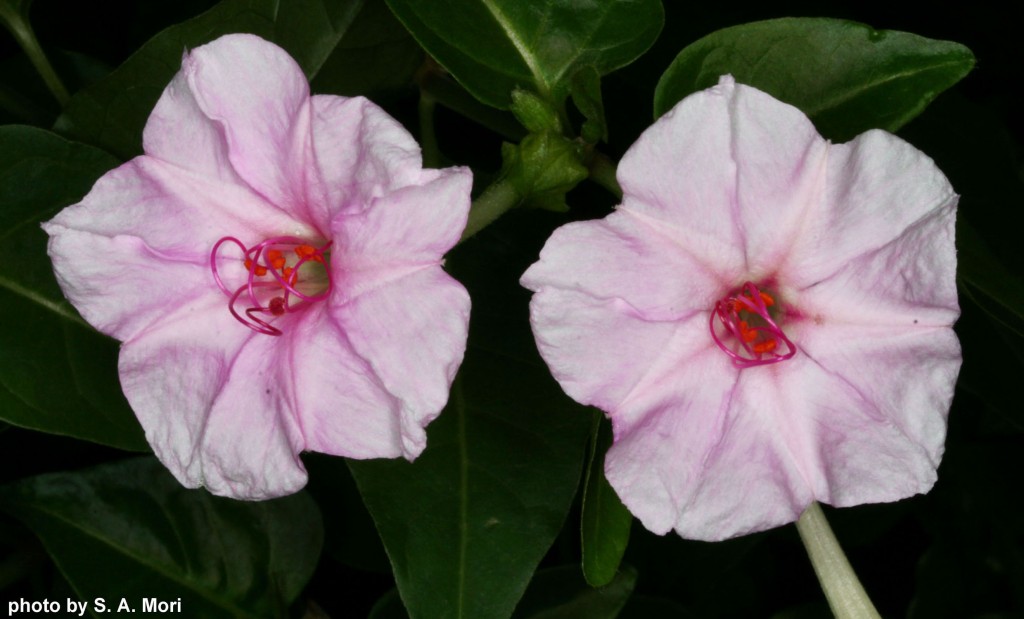
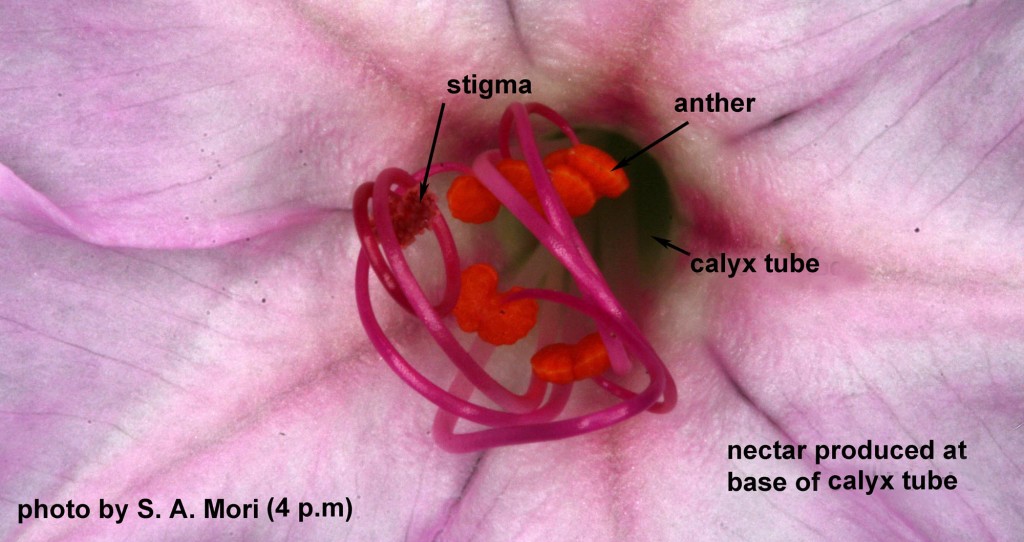
When the anthers and the stigma are placed at different levels, it forces the pollinator to make contact with the receptive anterior side of the stigma before it touches the anthers. The process increases the chances that pollen on an approaching pollinator will be deposited on the receptive side of the stigma. In contrast, pollen placed on the pollinator while in the flower is not rubbed off on the receptive part of the stigma when it exits the flower. This insures that pollen from the same flower is not deposited on the stigma of the flower, thereby increasing the chances of cross-pollination.
Although I did not come back later in the evening to look for pollinators, it is known that Mirabilis jalapa is pollinated by hawk moths. Most moth-pollinated plants flower after sunset, offer pleasant-smelling nectar, possess a narrow corolla tube, and have lightly-colored calyx lobes. All of these features characterize hawk moth-pollinated plants. It has been demonstrated that colder weather makes hawk moths inactive and results in self-pollinated flowers. In contrast, hawk moths are more active on warmer nights, resulting in more flowers being cross-pollinated. Once I knew this plant’s name, I was able to search for information about it on the internet. Knowing the name of the plant is, thus, the first step in finding out more information about it!
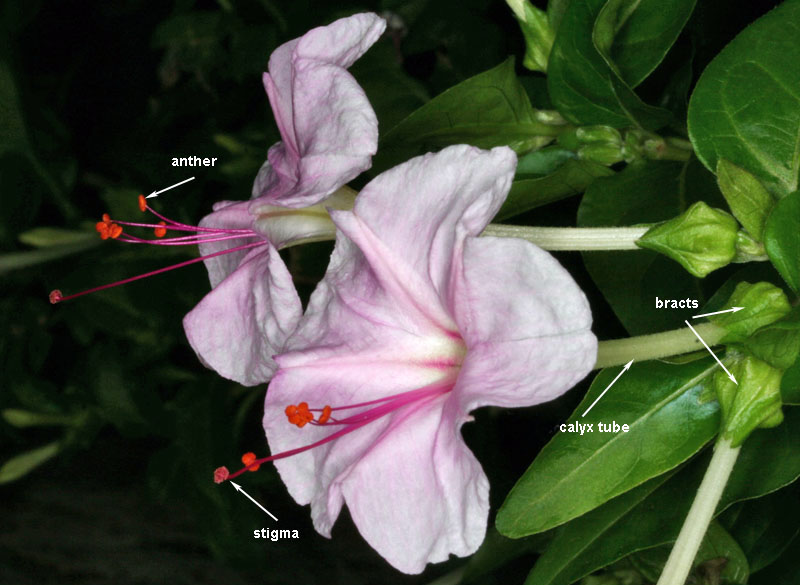
There is still so much to understand about plants that I learn something novel with every walk I take in a new city. Whether exploring the world of plants for enjoyment or as an aspect of scientific study, botanizing includes identifying plants, understanding how flowers are pollinated and seeds dispersed. I find the best way to remember what you learn is to take pictures of more than just the habit of the plant, because many common plants have had their portraits taken many times. On the other hand, relatively few close-up images have been snapped of the fine details of flowers, fruits, and seeds–even in the case of the most common plants.


This is fascinating! Thanks for sharing the story and photos.